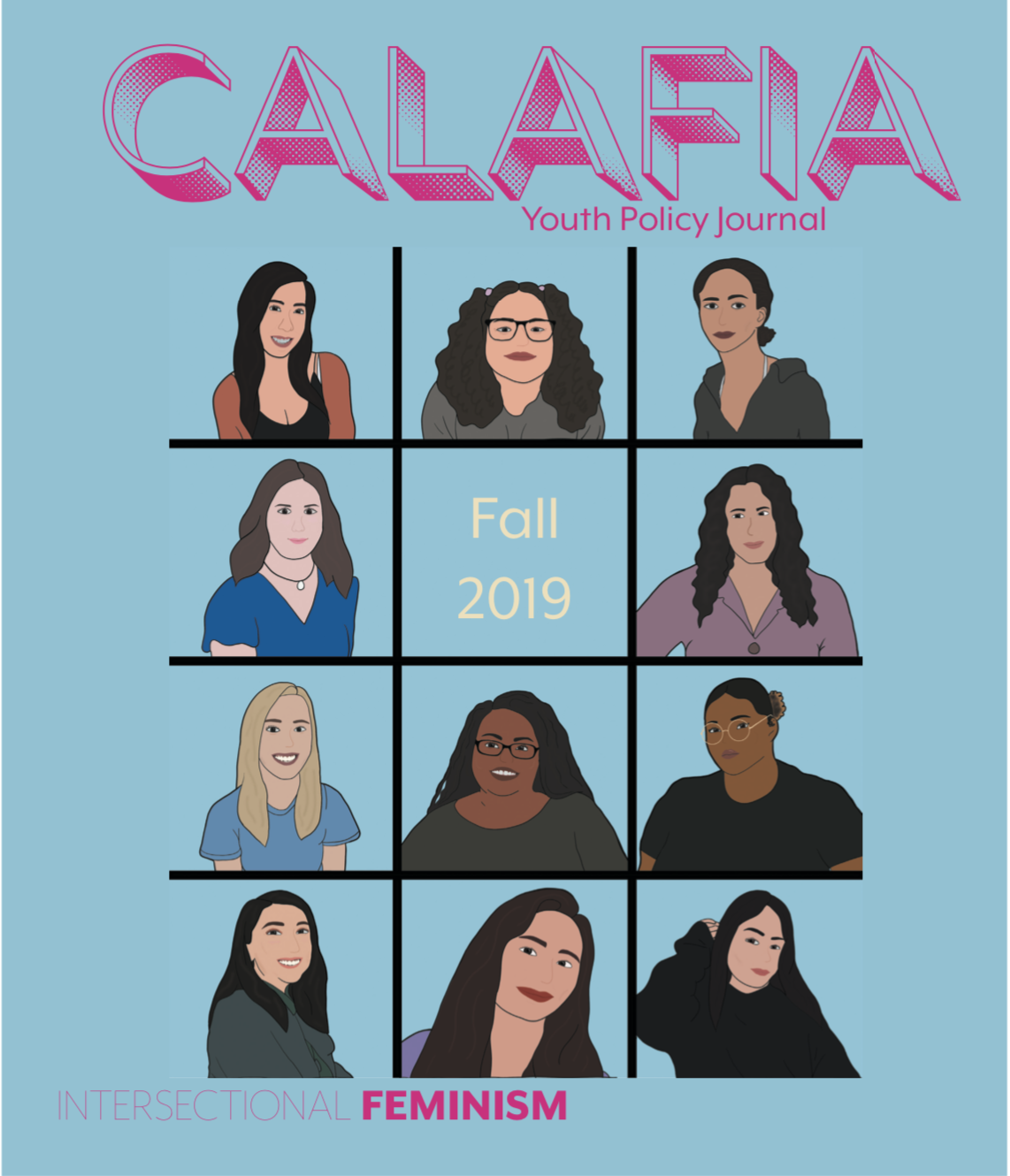Seven young women from across California engaged in yli’s Calafia fellowship to produce a magazine centering Intersectional Feminism. The stories take on issues such as: street harassment, gender norms, beauty and identity, queer issues, women’s history in classrooms, and women farmers.
Read their Editorial Letter below for a taste, download a digital copy here, and contact Michael Lozano for a print edition!

As the first all-female Calafia editorial board, the stories we were compelled to tell consistently highlighted the women around us and their experiences. Stemming from various communities, we wanted to acknowledge the lack of diversity in mainstream feminism and shed light on the issues that impact marginalized women. When we initially drafted ideas for stories we wanted to tell, not only were all of our stories coming from a feministic point of view, but they were all ideas sprouting from our own experiences, good and bad, as a result of being young women. It was vital for us to share the stories of honorable women, so all the generations, young and old, can learn the narrative we have chosen to tell.
In 1989, black feminist Kimberlé Crenshaw wrote that conversations around race and gender never included the experience of people who are affected by both the systems of racism and sexism together. In actuality, she wrote, the experiences of a black woman are often racialized and gendered at the same time. Her writing helped to create a feminist movement separate from the white feminism that had ignored the needs of women of color for hundreds of years. Intersectional feminism became advocacy for black women, by black women, focusing specifically on giving a voice to their unique experience at the intersection of race and gender. In more recent times, the term is often used to refer to feminism that focuses on all aspects of women’s identities, including sex, race, sexual orientation, religion, ability, socio-economic status and more.
In this youth-led magazine, you’ll be reading about how these intersections apply to our lives and others’. You’ll read the story about a lesbian activist teacher who teaches the history of LGBTQ+ people in her classroom, an unflinching commentary on how school history textbooks don’t cover females’ histories, and narratives direct from young women themselves on the constant harassment they go through while walking in public.
Many stigmas persist today, even from other people within the LGBTQ+ community, as well as the heteronormative expectations of friends and family. That’s why the hardships of being a queer youth is touched upon, most specifically within the bisexual community. Step into the shoes of up-and-coming model Aaron Smith to hear about her trials and triumphs after accepting her own identity as a woman, despite being told she was a boy.
We also take on women’s cultural issues, such as the pressures of being a young Latina in a traditional family clashing with the outdated ideals that come with it, something most Latino youth can empathize with. Us editors are here to share the unheard stories happening across California, giving women a voice. Though many of us can relate to these issues, sometimes in the past we may have remained silent. If any reader sees themselves in these stories, feel free, feel empowered to share yours and speak out.
